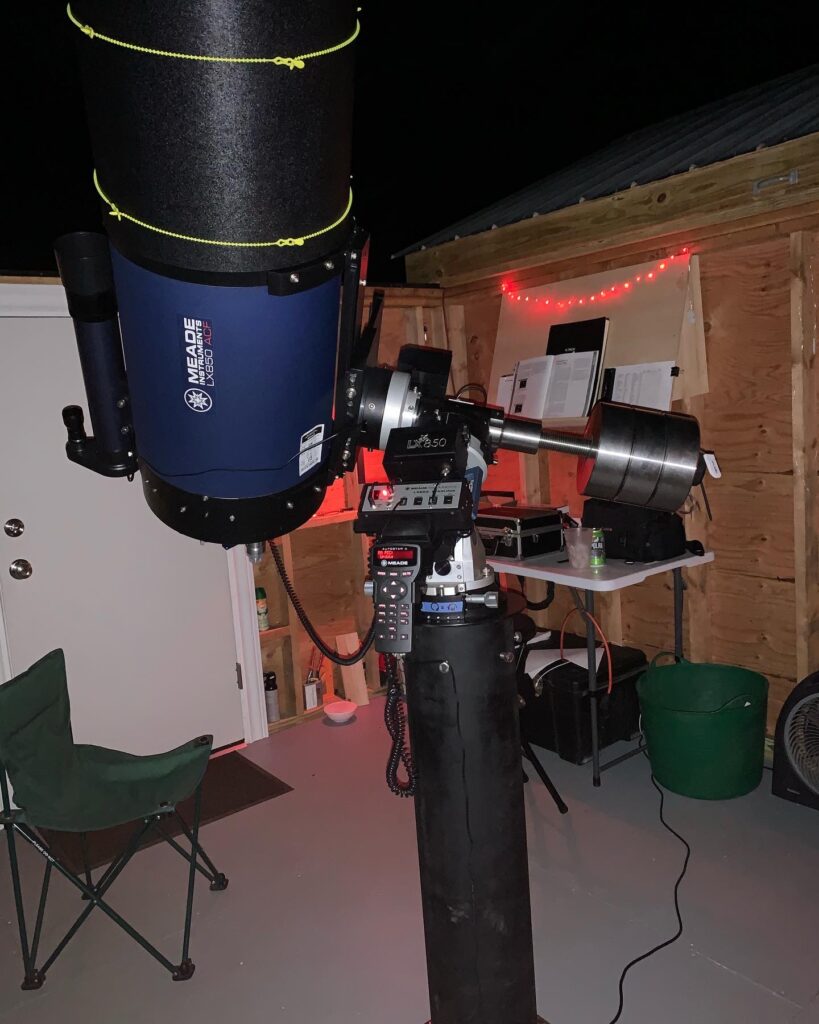Young or old, experienced or totally unfamiliar, we look forward to exposing you to our uniquely dark skies here in Lyme. Our last session was amazing. We had strong attendance, and it included children and adults, locals and visitors. (A family from California visiting family in Lyme are our official farthest-from-home attendees.) The new observatory was in full motion in its second public appearance. The evening began fully overcast, with dim prospects for seeing anything. We gave a brief tour of the new observatory, and talked about why it is built the way it’s built. By then two — and only two– stars were visible, Arcturus and Polaris. As we pointed them out, more stars appeared. Soon we could see the Summer Triangle and Cassiopeia. By evening’s end, it was clear overhead and we could see the entire Milky Way arching overhead. In the observatory telescope, we saw: Alberio, a two-color double star in Cygnus; M27, the Ring Nebula in Lyra; M27, the Dumbbell Nebula in Vulpecula; M11, the Wild Duck open cluster in Scutum; M13, the Hercules cluster (a globular cluster) in Hercules; M31, the Andromeda Galaxy; Saturn and its rings and moons; and Jupiter and its colored bands and its moons. Scott Mallory was onsite and led all the attendees through a compare/contrast of his 12″ Dobsonian telescope to the observatory’s Schmidt-Cassegrain. In the end, it was a brilliant night of seeing and learning.
The Lyme Land Trust offers public viewing sessions once a month near the new moon. Our cohorts have several different telescopes that are on display for your observing pleasure, and we now are pleased to have a modern 14″ Schmidt-Cassegrain housed in a permanent observatory structure. For future observing sessions, check Upcoming events on the Lyme Land Trust website.







